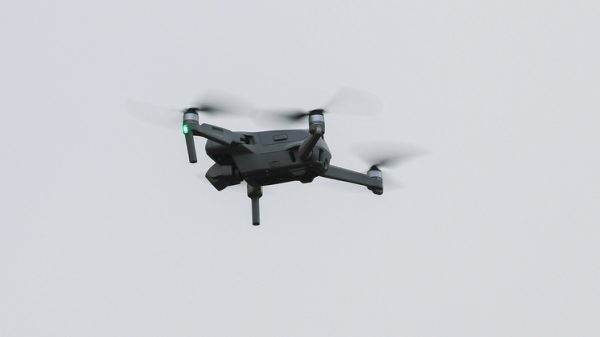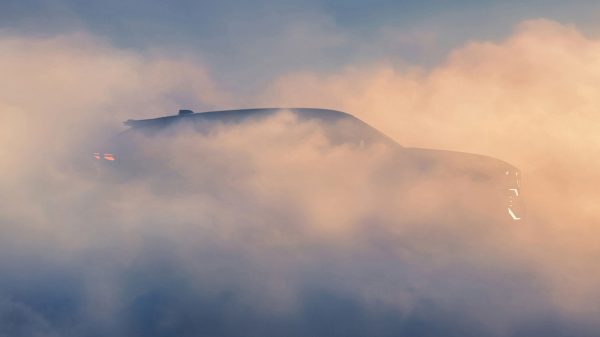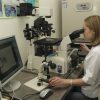Palaeontologists have never seen anything like this
A 29-million-year-old fossil nest discovered in the US state of Oregon may be the only one of its kind.
 Photo: National Park Service
Photo: National Park Service
In an ancient temperate forest in what is now Oregon, an insect burrowed deep into the sandy bank near a stream. There, in a damp hole, the female laid dozens of oblong eggs, about 50 in total. Despite her careful work constructing this underground nursery, none of the eggs ever hatched. Instead, the cocooned eggs were fossilized into a rocky, mineralized mass. And now, 29 million years later, they provide evidence of insect reproduction that may be unlike anything paleontologists have seen before.
As CNN reports, a recent micro-computed tomography scan of the egg's body revealed not only that the nest was millions of years old, but also that it was most likely made by a grasshopper. The eggs and general nest design are very similar to the eggs and cocoons of modern grasshopper species. This newly documented knowledge paints a clearer picture of this ancient ecosystem, confirming that grasshoppers were present and thriving there — and that some species of grasshoppers hid their eggs underground.
Insect eggs are extremely rare in the fossil record, and intact eggs are even rarer, CNN notes. It is likely the only fossilized cocoon containing grasshopper eggs in history, and provides insight into their reproduction dating back to the Oligocene epoch (33.9 to 23 million years ago), researchers reported Monday in the journal Parks Stewardship Forum.
What makes this fossil find even more remarkable is that it was made in a habitat that is not typically conducive to fossilization, said study co-author Dr. Nick Famoso, director of the paleontology program and museum curator at John Day National Fossil Site. The site, located in Mitchell, Oregon, is managed by the National Park Service.
Fragile fossils like this specimen are typically preserved in lake sediments next to plant material. Such places tend to be anoxic or oxygen-poor and relatively static, Famoso explained. There, fossils can form in peace, undisturbed by currents or bacteria. But millions of years ago a river or stream flowed through this place. However, the conditions surrounding this egg cocoon were just right for it to remain buried and fossilized in near perfect condition, despite the dynamic environment of the water flowing nearby, Famoso said.
The eggs in this fossil are remarkable for their preservation «both individually and in groups,» said paleobiologist Dr. Ricardo Perez de la Fuente, deputy director of research at the Natural History Museum at the University of Oxford in the United Kingdom.
“They are the first to be recognized as belonging to Orthoptera— grasshoppers and their relatives — in the fossil record, which is remarkable,” says Perez de la Fuente, who was not involved in the study.
“This work also represents an important step toward formalizing the description of immature stages of insect development, in particular the egg stages,” Perez de la Fuente said. This branch of science, known as ootaxonomy, «can provide crucial data on the evolution, behavior and ecology of insects in ancient times, but which are generally neglected in paleontological research.» Moreover, he added, the cocoon and eggs may provide clues to the environment in which they fossilized.
Christopher Schirup, data collection manager for the National Park Service, discovered the egg case in the fossil deposits in July 2012 of the year. Shirup was conducting a routine visual survey of the site when he noticed an object that was embedded in a piece of rock that had rolled down a hill, Famoso recalled.
“No tools were needed to get it out of the ground,” he says. Shirup wrapped the item in toilet paper «and carefully returned it to the visitor center where our laboratory is located,» Famoso added.
Based on a superficial analysis of the fossil, the researchers initially thought they had found a cluster of ant eggs. But Famoso was skeptical because their curvature was different from that of ant eggs and pupae. His suspicions were confirmed by Lee, who first saw the object in 2022 while visiting the John Day fossil deposits. They took the sample to the Knight Campus of the University of Oregon in Eugene, where study co-author Angela Lin, director of the X-ray Imaging Research Center, performed microcomputed tomography.
“That’s when we discovered that there was this protein layer that held everything together,” Famoso says. It wasn't just a cluster of eggs — it was a type of underground egg pod called an ooteca, with the eggs surrounded by a protective layer that mineralized into a stony crust.
“Underground egg pods currently produce only two groups of insects,” Li said. These are grasshoppers (order Orthoptera, suborder Caelifera) and heeled walkers (order Mantophasmatodea).
Visible on the surface were 28 ellipsoidal eggs, each measuring no more than 4.65 millimeters in length and 1.84 millimeters in width (this is comparable to the eggs of modern grasshoppers, although egg size may vary depending on the species). The scans revealed more than two dozen more eggs buried in a matrix in four to five layers, arranged in a radial pattern. Some of the eggs were hollow, while others were filled with sediment, the study authors said.
“The mineralization we were able to see in each of the eggs showed very clearly that this was a fossilized structure.” — says Famoso.
Because fossil insect eggs are so rare, scientists didn't have many specimens available for comparison. So Lee turned to a global database of insect eggs containing more than 6,700 living species to identify the eggs in the fossil cocoon.
“I compared the defining characteristics of eggs, including size, length-to-width ratio, and curvature of individual eggs, with those of the living,” he said. — Such large, elliptically curved eggs in a large clutch (~50 eggs in total) are unknown in any other living group of insects, except grasshoppers and locusts.
This unusual find provides unprecedented insight into the reproduction of ancient relatives of modern grasshoppers. The virtually untouched specimen also speaks volumes about the level of fossil preservation within the national park, Famoso added.
“Just being able to see that internal structure and actually properly describe what these things looked like was something really exciting for us. , — said Famoso. “It’s just that nowhere, as far as we know, is there anything like it in the fossil record.”


























































Свежие комментарии